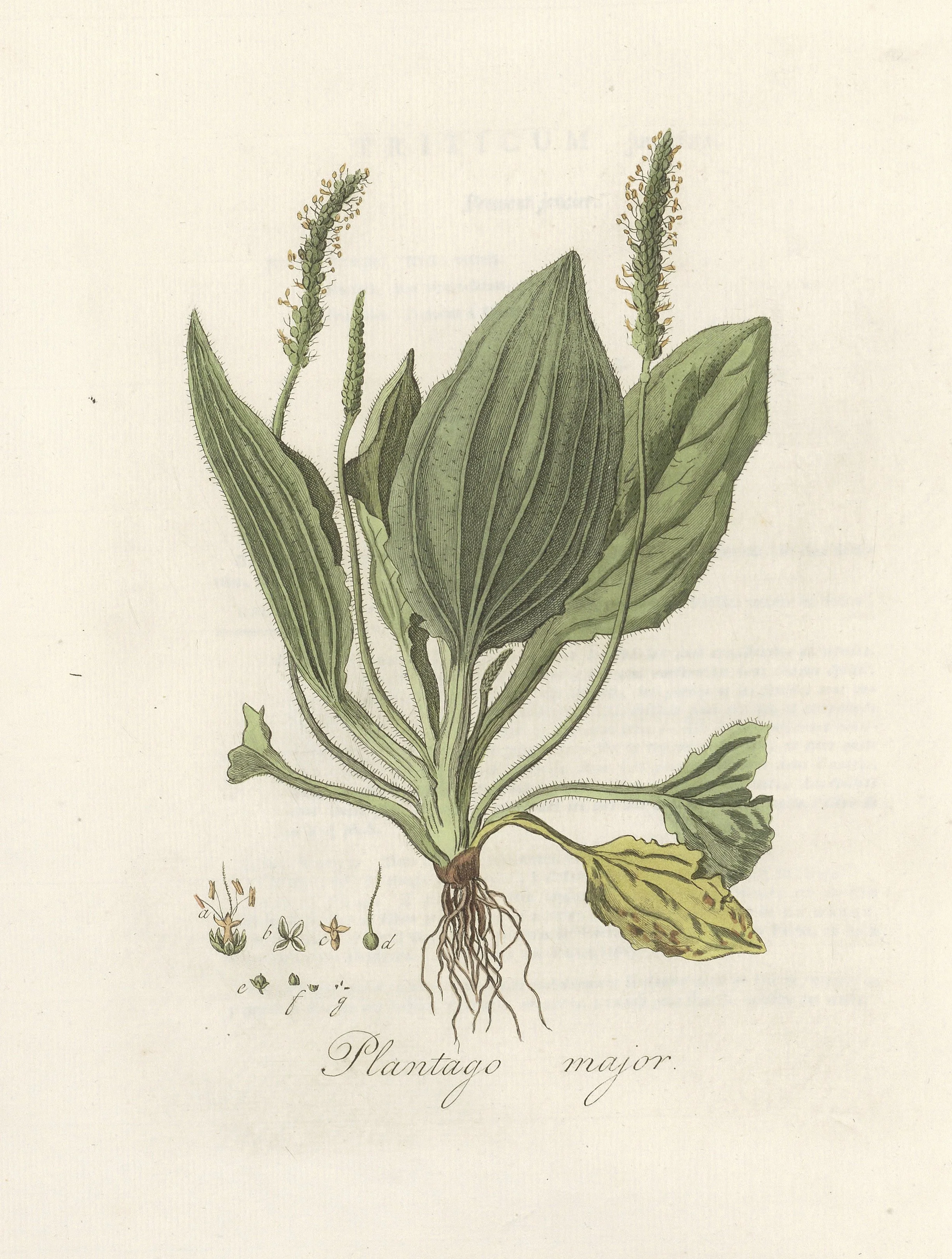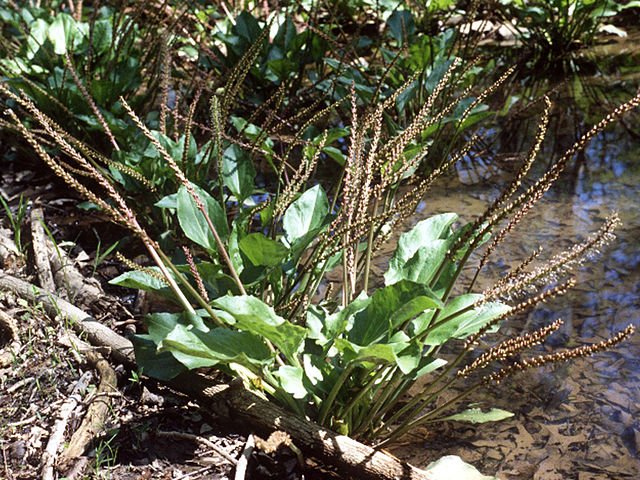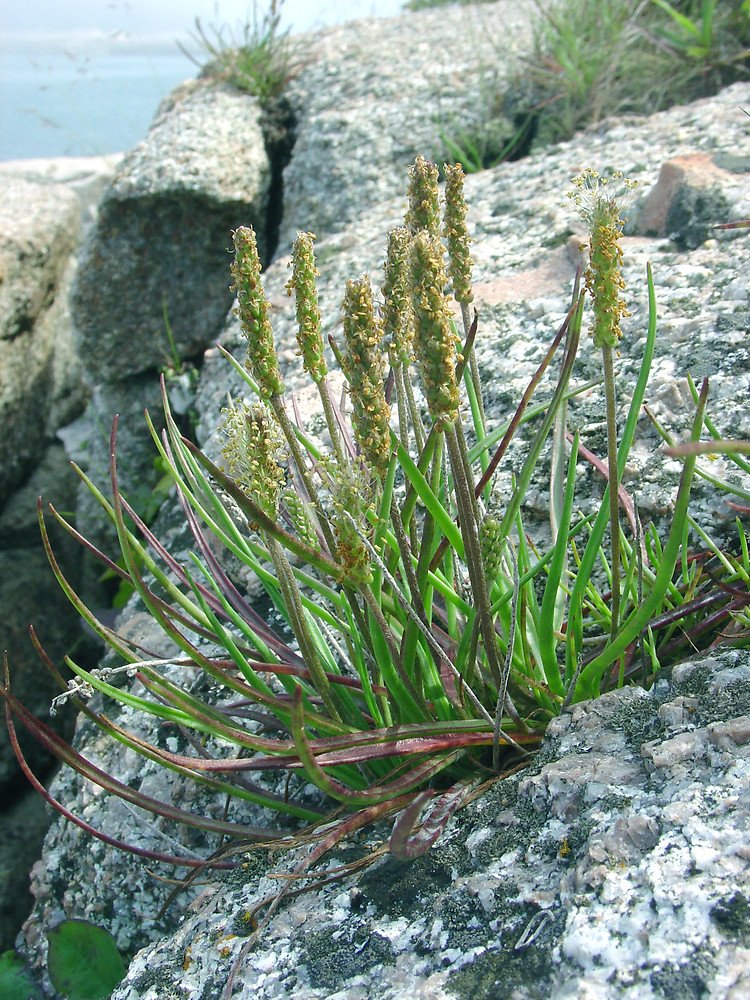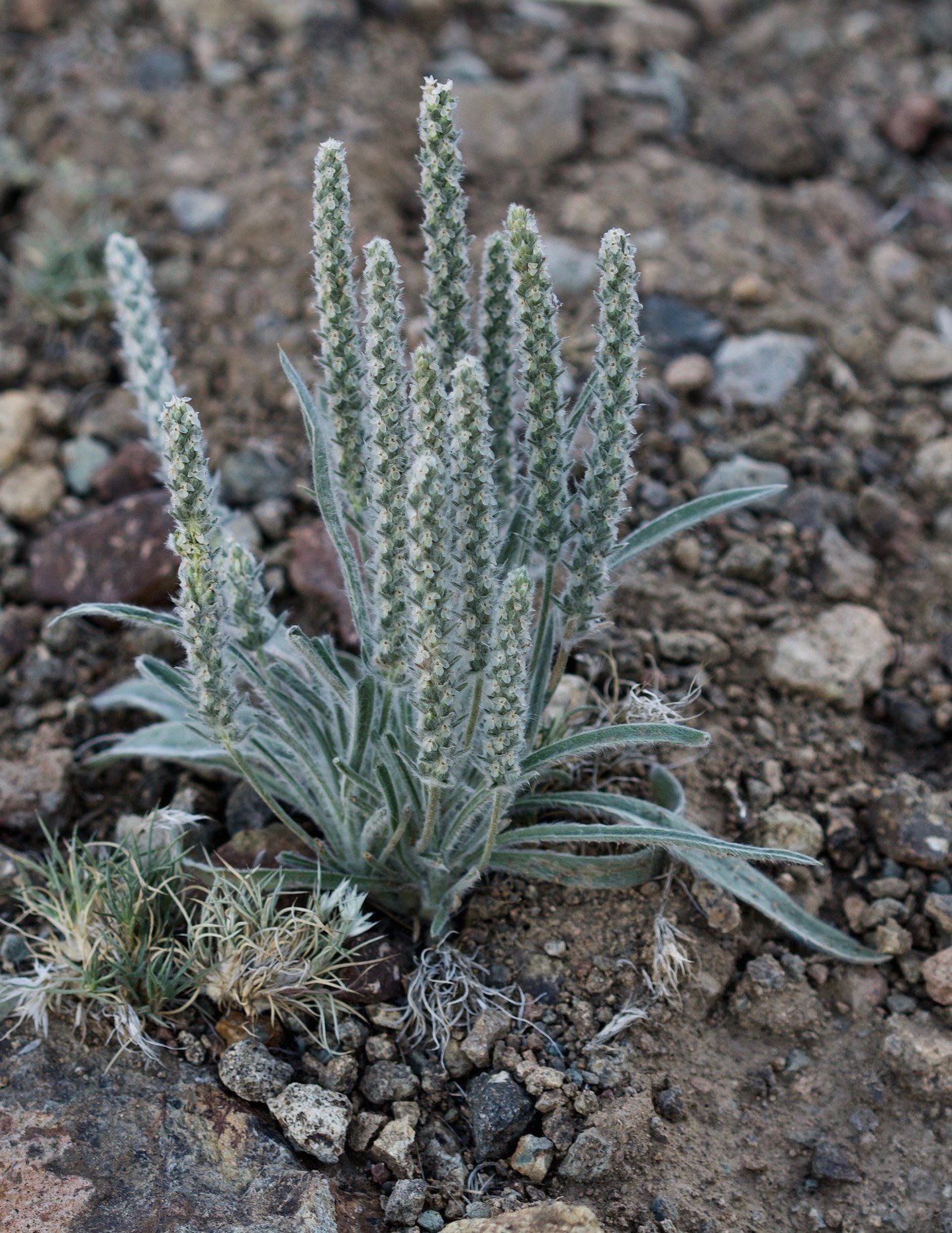Plantain: An Accessible & Easy to Forage Plant
I found herbalism as a teen through foraging for wild foods, mushrooms, and medicine. Every weekend was spent wandering through nature preserves along the Chattahoochee River, climbing up steep hills where all I had to hold on to was eroded roots of towering oak trees, and skidding down rocks on the riverside in search of elderflowers. In these exploits, I earned many bruises, bug bites, and serious scrapes...maybe a bit of poison ivy and my fair share of yellow jacket stings.
Enter plantain–the very first herbal medicine I ever worked with.
For entirely practical purposes, I made a plantain salve to carry with me on the trails and to help heal the foraging battle scars I picked up along the way. But then I learned more about our dear friend Plantain, eventually reading that it was a potent ally for the digestive system.
I realized the herbal formula my naturopath had me on for digestive woes included this plant that grew in my backyard. So I went outside, picked a few leaves, and made myself tea daily for an entire summer. I was just beginning the recovery process from my diagnosis of Celiac Disease, and plantain truly healed me on a mind, body, and soul level. I am forever indebted to this often-overlooked plant and can't wait to share more about its virtues with you.
“A friend once told me that ‘everyone who works with plants has a miraculous story about plantain.’ I have found this to be very true. I often tell the story of the little girl who burned her foot in the sweat lodge and was able to completely heal her massive, painful blisters in less than an hour. I could tell a thousand more stories about this incredible plant that grows all around us…Be grateful for this plant relative.”
Plantain’s Latin genus name Plantago comes from planta, meaning “sole of the foot,” describing its flat leaves. Its common name, planteine, is first attested to in English c. 1300, from the Anglo-French plaunteyne, old French plantain, and Latin plantaginem. Another common English name is waybread or weybrede, which comes from a prehistoric West Germanic compound that translates to way broad, referencing plantain’s broad leaves and tendency to grow by roadsides.
In Scandinavia, where species like P. major have been growing for at least 4000 years, it is known as groblad, meaning healing leaves. The plant is most known in this region for its wound-healing properties, which are even referenced in the Vølsuga saga. It is commonly discussed in various European herbals, as well as in medical texts throughout Asia.
But what about plantain's roots in the so-called Americas?
We are often told that plantain is a completely non-native plant to the Americas and only arrived here by hitching a ride on the boots of colonizers. Perhaps this story stems from its common name of “white man’s footprint,” which could come from the clear migration of European species in Turtle Island and the etymological roots of its name, meaning “sole of the foot.”
The common name of “white man’s footstep” for specifically P. major, broad-leaved plantain, seems to have been first published in New-Englands Rarities Discovered by John Josselyn (1672) where the author says: “Plantain, which the Indians call English-Mans Foot, as though produced by their treading.”
Many herbal publications assert that the common name of “white man’s footsteps” is for plantain, generally, but fail to emphasize that this name is only used for broad-leaved plantain, or Plantago major. There are also other Indigenous names for this non-native variety; for example, a text about the ethnobotany of the Anishinaabe says that one of the names for P. major is ceca' gûski' bûge sînk, meaning leaves grow up and also lie flat on the ground.
It is true that species like P. major and P. lanceolata are expats from Eurasia who have now become naturalized throughout the Americas. However, many species of Plantago are native to this region and have been used by Indigenous peoples here as food and medicine for thousands of years.
Archaeological evidence from the central coast of California has found evidence of consumption of plantain by the Chumash since the Millingstone Horizon, from 6500-1500 BCE, which predates records of P. major use in even its native region.
It is also theorized that non-endemic species of Plantago could have been introduced to Turtle Island centuries before European colonization by the Norse, who settled in North America in the 10th century CE. Though non-native species like P. lanceolata and P. major are widespread throughout North America (and everywhere besides Antarctica), many indigenous plantain species exist here:
Additional endemic species exist in Hawaii, a new one was recently found in New Zealand (where there are at least 11 native species), with many others scattered around the globe.
In the United States and Canada, you're most likely to find Plantago major or Plantago lanceolata. If you're on the East Coast of North America, you'll also find the native plantain: Plantago rugelii, or Rugel’s plantain. It is often confused with P. major as they look nearly identical, but P. rugelii is pink at the base of the stems. This is its most identifiable feature. Other local species include P. cordata, heart-leaved plantain, and P. virginica, Virginia plantain, among many others.
Naming this context and history is vital–when we utilize common names of European plants only or only refer to the European species of plants as the “standard” of herbal practice, we center a Eurocentric narrative of herbalism. This centering tends to prioritize one group's knowledge over another and, in this specific case, upholds ideas of European superiority.
In this rewriting of history common throughout “Traditional Western Herbalism,” the Indigenous American uses of plantain are often exempt from monographs on the plant, as is its deep history in other regions outside of Europe. Species of plantain have been used as food and medicine by different people in every corner of the world–all of whom have their own names for the plants and uses that predate European colonization.
In our latest monograph inside of Herbaria, we explore plantain’s long tradition of use by humans worldwide, focusing on Asia, the Americas, and parts of Africa.
Herbaria is an online library and community learning space filled with plant magic, healing recipes, classes, and so much more. Herbalism is for everyone, but finding reliable info is hard these days. Instead of spending all your time searching for education you can trust, we've done the work for you!
Inside the library, you'll find:
39+ in-depth plant profiles to help you get to know the plants growing around you
135+ simple & seasonal recipes you can incorporate into your everyday life
$867+ worth of captioned classes with culturally & bioregionally-rooted herbalists
A robust community forum where you can ask questions, chat about your own practice, and share resources with each other
and so much more!
New materials are added every month to help you continue your herbal studies! By joining, you get access to over $1200 worth of materials immediately that are easy to read from your phone or computer, completely searchable, and available anytime. Feel free to join us for one month or stick around indefinitely–many of our members have been part of the community for 2-4 years!
Learn herbalism in community with the plants, seasons, and other herb folk–memberships start at $15 per month.
Hope to see you in our online community soon!
Current members: you'll find the plantain monograph linked at the top of the community home page. I'll be posting recipes soon too!
Warmly,
Sarah
-
Can be found inside of the full-length monograph within Herbaria.






